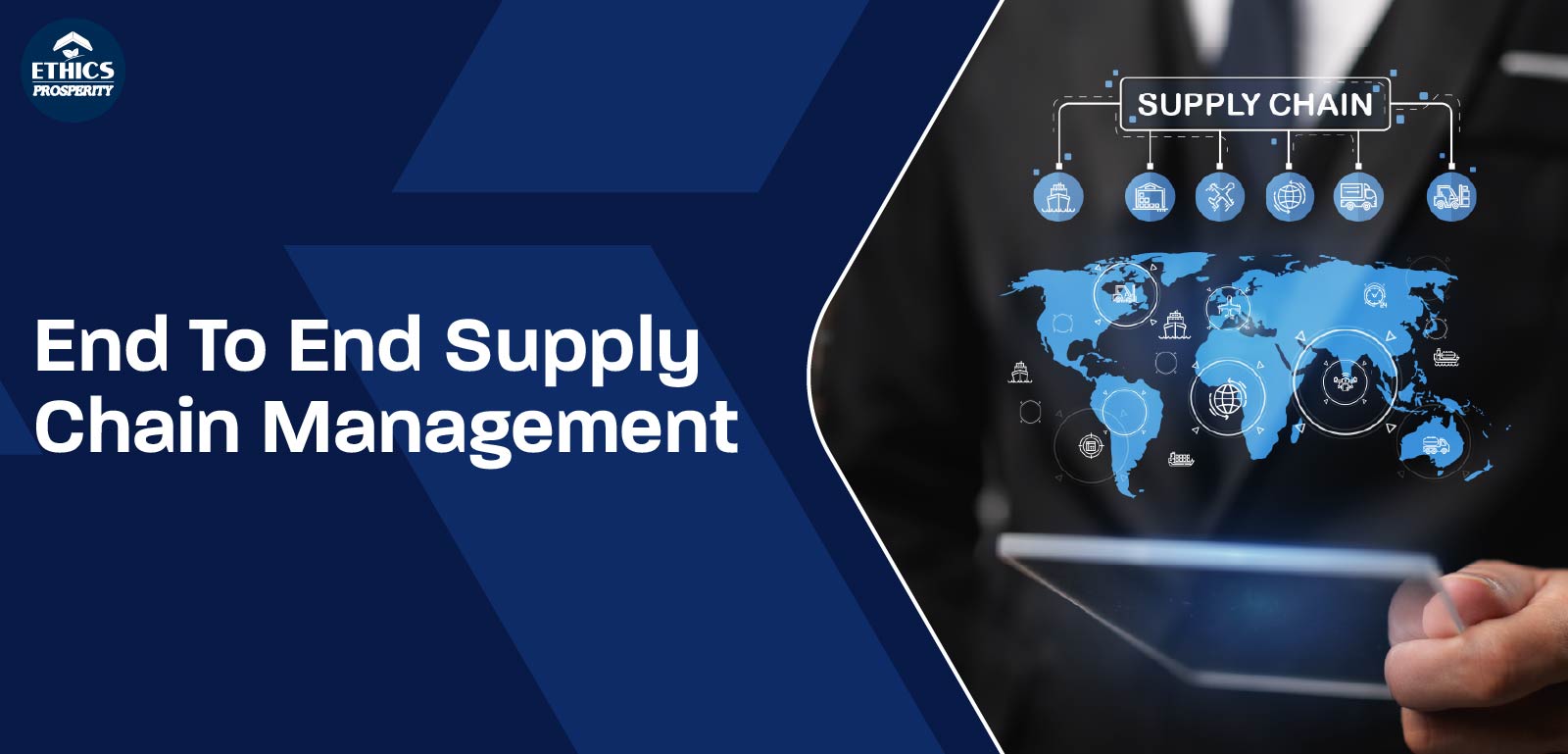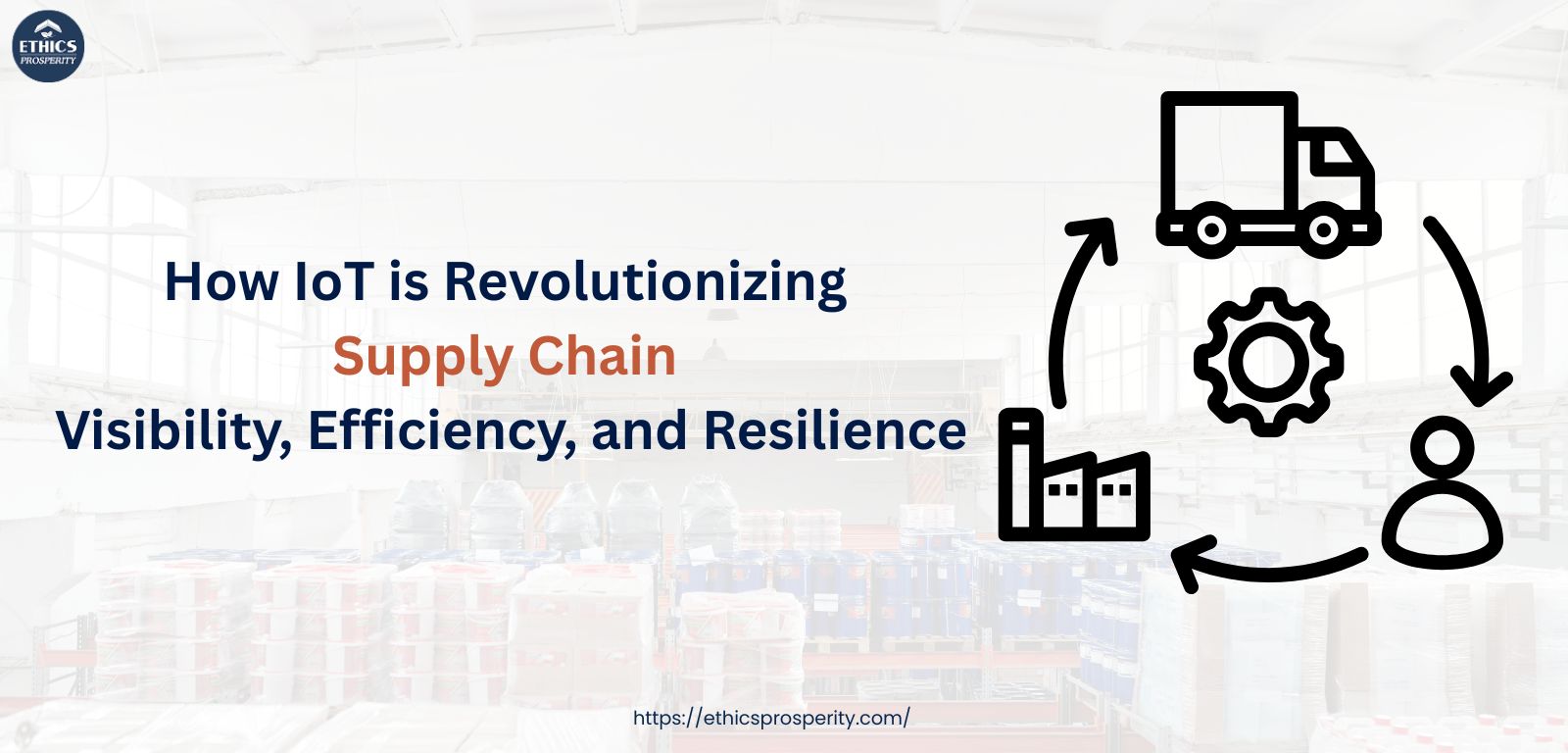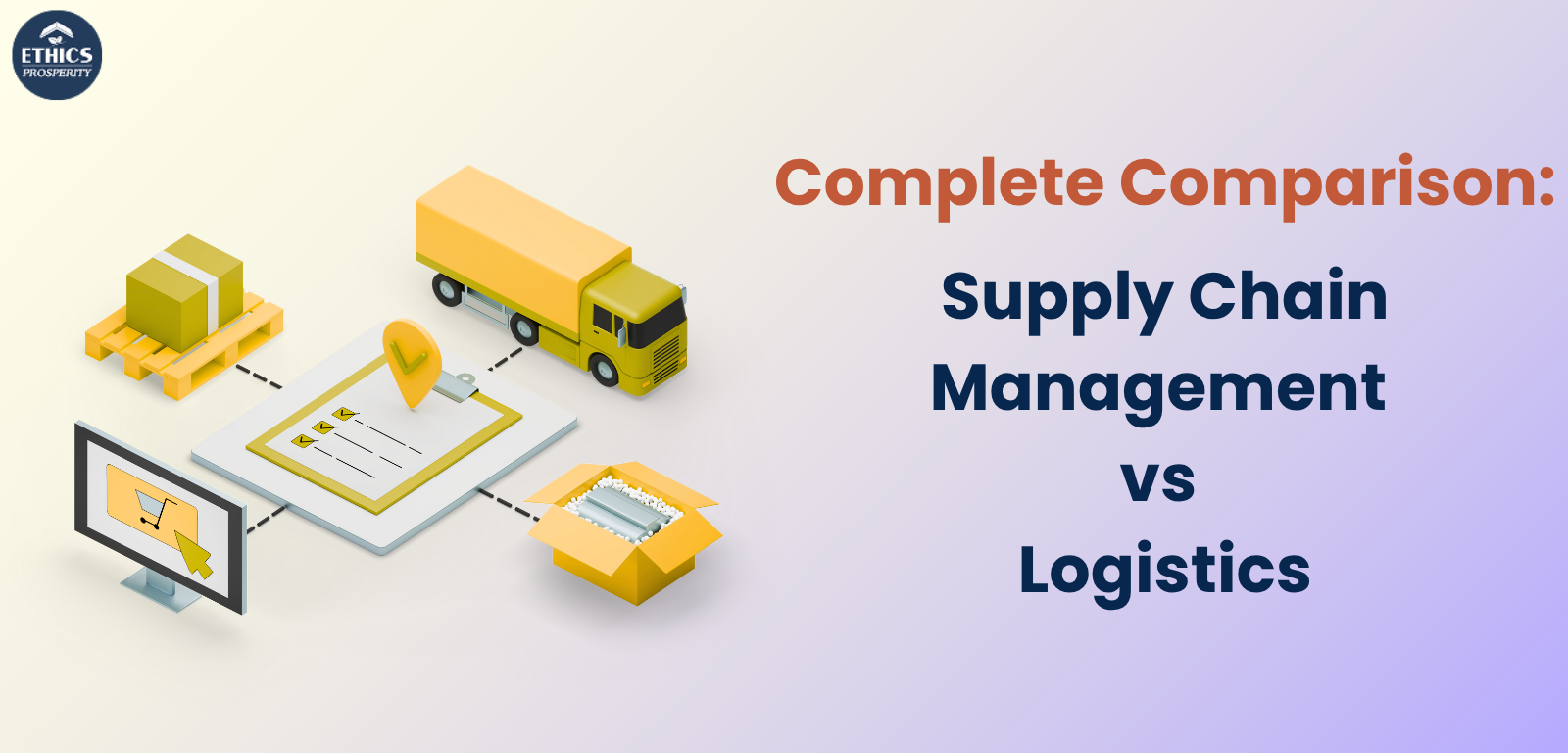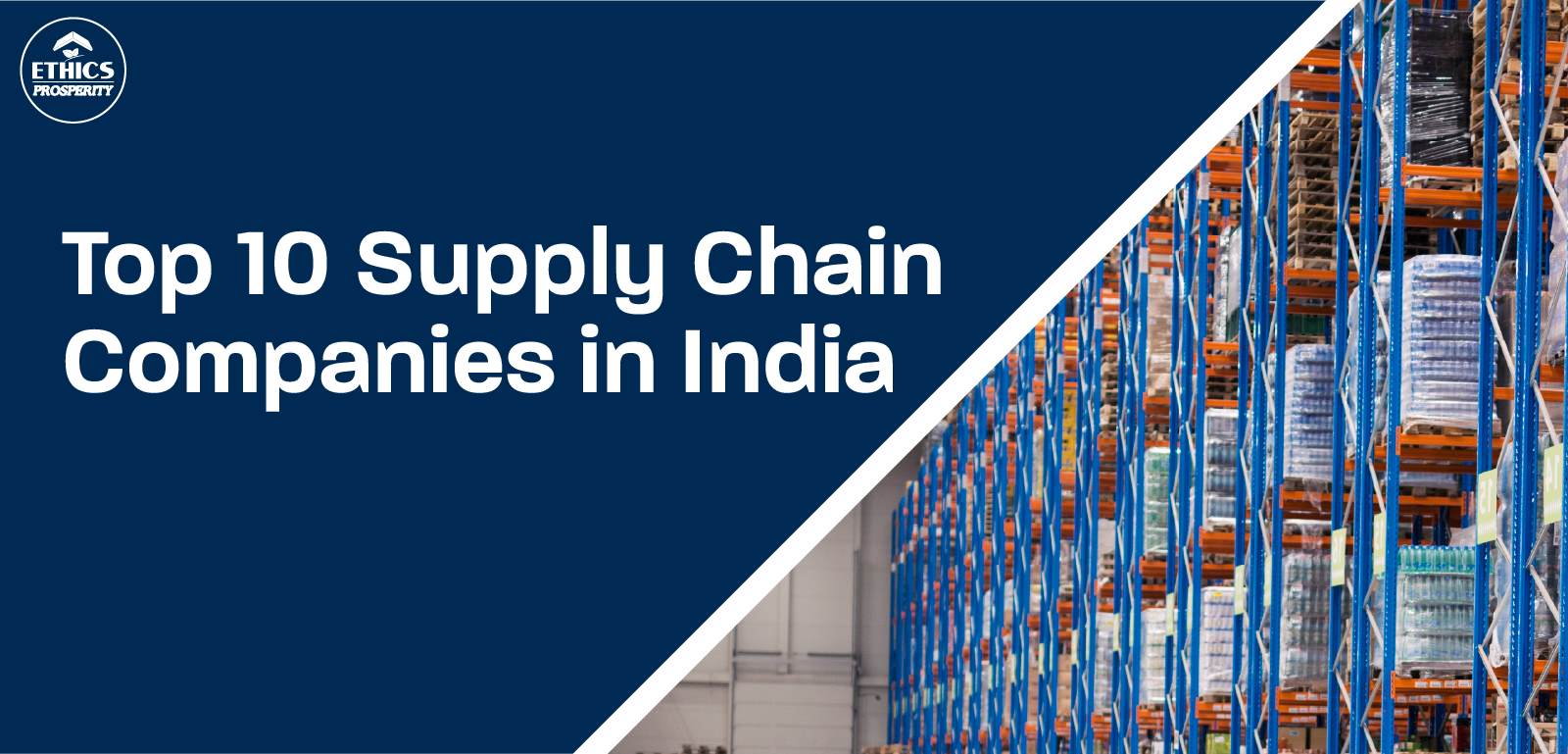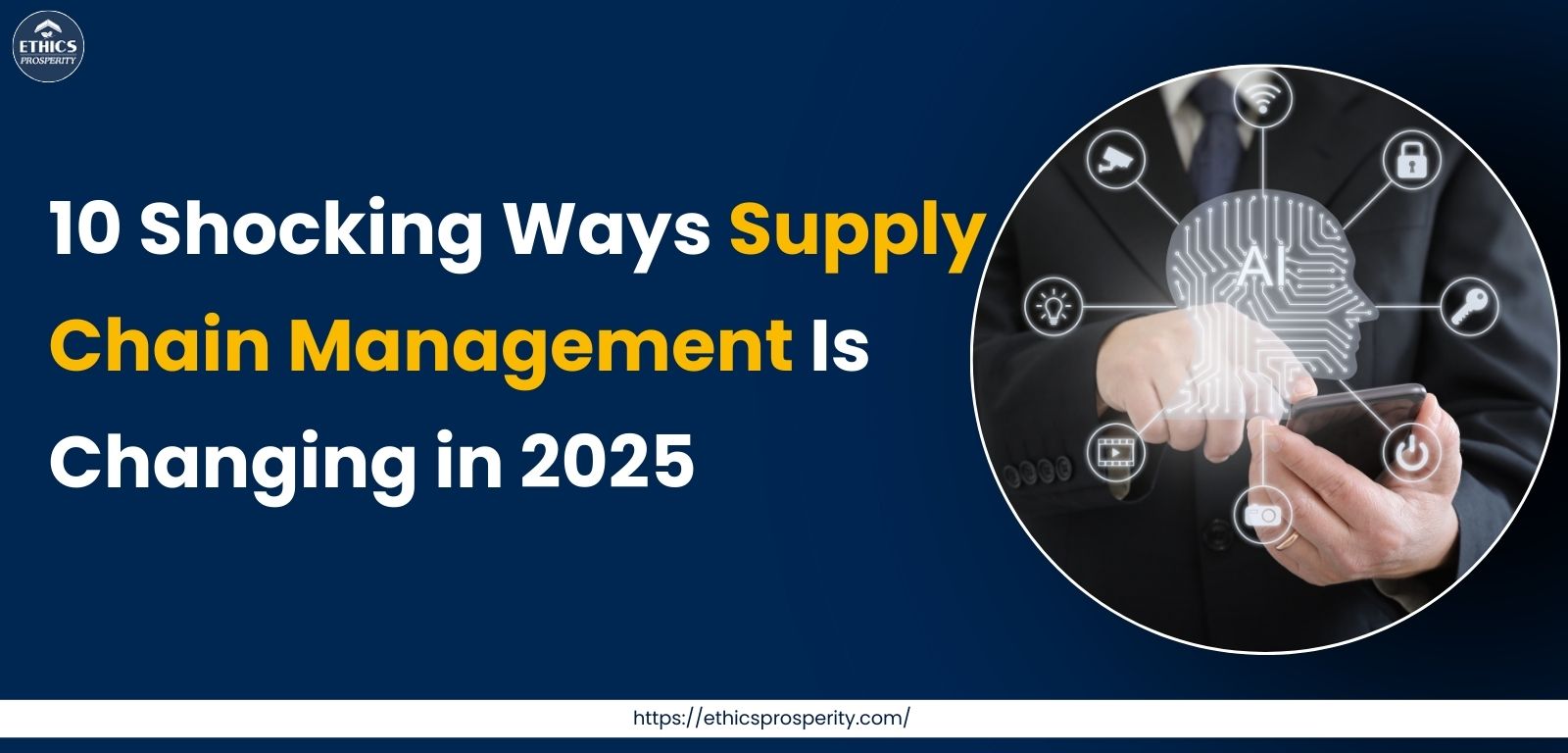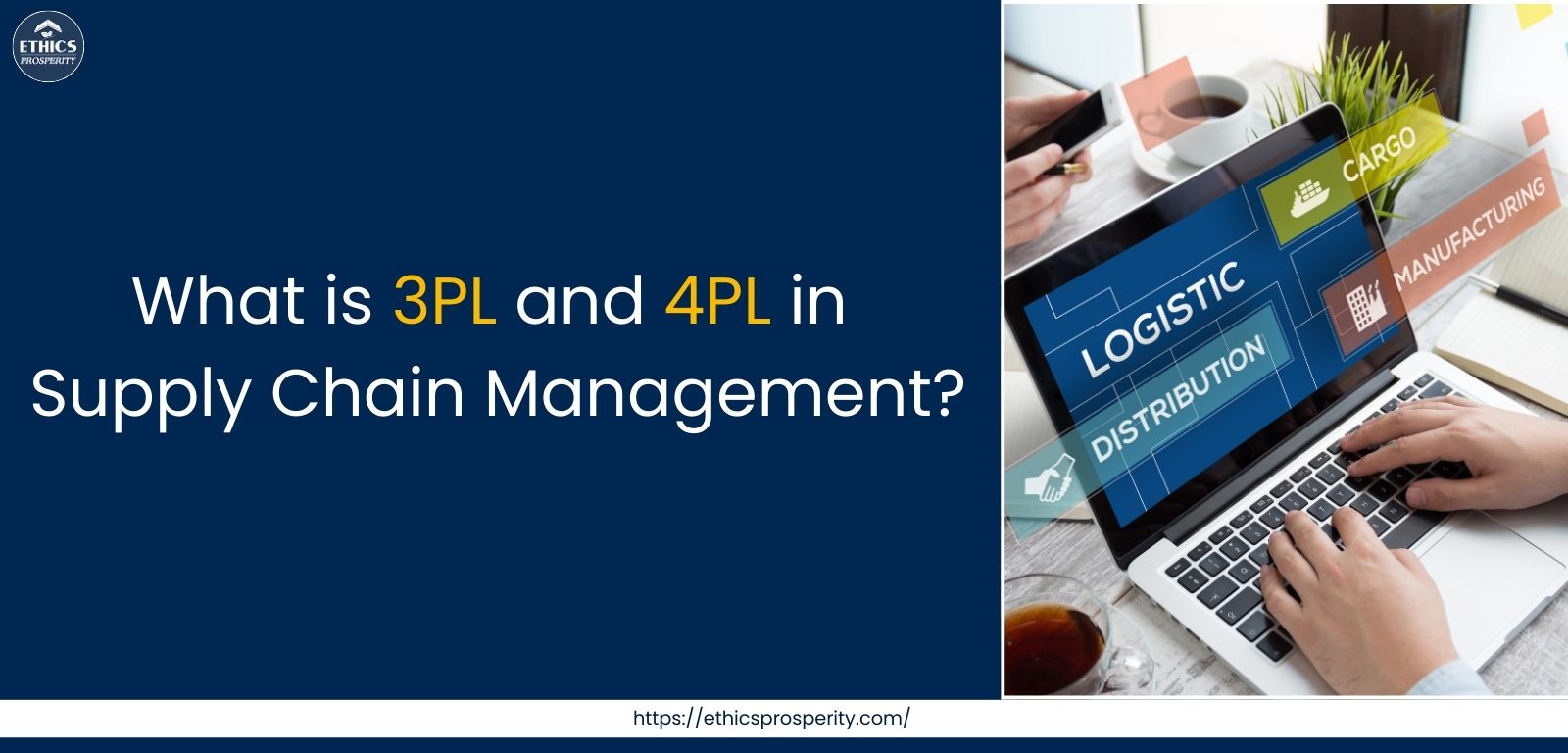In today’s competitive, customer-driven marketplace, businesses are increasingly turning to End-to-End Supply Chain Management as a strategic approach to optimize their operations. Unlike traditional, siloed models, an E2E supply chain connects all key functions—from procurement to delivery—into one integrated, transparent ecosystem. This allows businesses to achieve better visibility, reduce costs, respond faster to disruptions, and enhance customer satisfaction.
What Is an End-to-End Supply Chain?
An end-to-end supply chain covers the entire process from sourcing raw materials to final product delivery and after-sales service. It ensures seamless integration across procurement, production, warehousing, logistics, and customer fulfillment for maximum efficiency.
Importance of Supply Chain Management
End-to-End (E2E) Supply Chain Management is essential for businesses looking to remain competitive in today’s fast-paced and complex market environment. By integrating every stage of the supply chain—from raw material sourcing and manufacturing to warehousing, distribution, and post-sale support—companies can achieve complete visibility and control across operations. This holistic approach not only improves decision-making and reduces operational silos but also enhances customer satisfaction through faster deliveries, better inventory management, and increased agility in responding to market changes. Ultimately, E2E supply chain management leads to improved cost efficiency, risk mitigation, and long-term business sustainability.
Supply Chain Process?
Here’s a breakdown of the key stages involved:
- Supplier Management & ProcurementInvolves sourcing raw materials or components from reliable suppliers while focusing on quality, cost, and timely availability.
- Inbound LogisticsCovers the transportation, receiving, and storage of materials coming into the business-often involving customs, warehousing, and inventory control.
- Production & ManufacturingTransforms raw materials into finished products through manufacturing, assembly, or processing, ensuring quality standards and operational efficiency.
- Inventory ManagementTracks inventory levels across the supply chain to avoid overstocking or stockouts and optimize working capital.
- Warehousing & FulfillmentStores finished goods and manages order processing, picking, packing, and preparation for dispatch.
- Outbound LogisticsDistributes products to customers through various channels-retailers, distributors, or directly via last-mile delivery services.
- Customer Service & Returns (Reverse Logistics)Manages post-sale support, including returns, repairs, replacements, and feedback collection.
- Data Analytics & Continuous ImprovementUses real-time data and analytics to monitor performance, forecast demand, and optimize the entire supply chain process.
This integrated approach is crucial for businesses looking to enhance agility, reduce risks, and stay competitive in today’s dynamic marketplace.
Benefits of Supply Chain Solutions
Implementing an End-to-End (E2E) supply chain model offers a wide range of strategic and operational benefits for businesses:
- Enhanced Visibility: Real-time insights across the entire supply chain allow for proactive decision-making, improved forecasting, and early identification of disruptions.
- Improved Efficiency: Streamlining workflows between sourcing, production, logistics, and delivery reduces redundancies and operational delays.
- Cost Optimization: By identifying inefficiencies and reducing waste, businesses can significantly cut down on transportation, inventory, and warehousing costs.
- Stronger Collaboration: E2E integration fosters better coordination among stakeholders—suppliers, manufacturers, logistics partners, and retailers—ensuring smoother operations.
- Customer Satisfaction: With faster response times, improved product availability, and reliable deliveries, businesses can meet customer expectations more consistently.
- Risk Mitigation: Greater transparency and control help businesses anticipate and manage risks related to supply disruptions, compliance, or demand fluctuations.
An end-to-end approach empowers organizations to build agile, resilient, and customer-centric supply chains ready to adapt to evolving market dynamics.
End-to-End Supply Chain vs Traditional Supply Chain
The End-to-End (E2E) Supply Chain is a contemporary, unified strategy that seamlessly links all functions, ranging from sourcing and production to delivery and after-sales service, into one integrated system.
In contrast, the Traditional Supply Chain is often fragmented, with each function operating in silos and minimal data-sharing between departments or partners.
In a traditional setup, information flow is linear and reactive. This can lead to delays, inefficiencies, and a lack of agility when responding to disruptions or market shifts. Inventory management is often static, relying on historical data and manual inputs.
Conversely, the E2E supply chain is proactive, data-driven, and customer-centric. It enables real-time visibility, predictive analytics, and better coordination among stakeholders. This leads to faster decision-making, reduced costs, improved inventory accuracy, and enhanced customer satisfaction.
Additionally, E2E models support automation, sustainability tracking, and more robust risk management. While traditional models may suffice for simpler supply networks, businesses with complex operations, high customer expectations, or fast-moving goods benefit greatly from the flexibility and intelligence of an E2E system.
In summary, the E2E supply chain offers a smarter, more responsive alternative to traditional methods, empowering companies to stay competitive in today’s dynamic marketplace.
Here's a more detailed look at the challenges:
1. Lack of Visibility and Transparency:
Real-time tracking: Many businesses struggle to track inventory, shipments, and orders in real-time.
Siloed data: Different departments or partners may use separate systems, hindering information flow.
- Example:In the pharmaceutical industry, tracking temperature-sensitive drugs across the supply chain, especially with multiple logistics partners, can be difficult.
2. System Integration Issues:
Legacy systems: Integrating new systems with older, outdated ones can be complex and costly.
Data inconsistency: Different systems may use different data formats, making it difficult to share information.
3. Managing Disruptions:
Natural disasters: Events like hurricanes or floods can disrupt supply chains, causing delays and shortages.
Geopolitical tensions: Trade disputes and political instability can impact sourcing and shipping.
Labor shortages: Finding and retaining qualified workers in logistics and manufacturing can be a challenge.
Port Congestion: Overwhelmed ports can lead to delays and increased costs.
4. Demand Forecasting:
Uncertainty: Predicting future demand can be difficult, especially with fluctuating consumer preferences and seasonal variations.
Example: Businesses may order too much inventory or not enough, leading to storage costs or lost sales.
5. Cost Management:
High initial investment: Implementing end-to-end systems can require significant upfront costs.
Rising fuel and energy costs: Transportation costs can significantly impact overall expenses.
6. Risk Management:
Supplier diversity: Relying on a limited number of suppliers can create risks if one supplier experiences disruptions.
Security breaches: Protecting sensitive data in the supply chain is crucial.
7. Customer Expectations:
Faster delivery: Customers expect faster and more reliable delivery times.
Personalized experiences: Customers also expect customized products and seamless experiences.
8. Complexity:
Multiple stakeholders: Managing relationships with suppliers, manufacturers, distributors, and retailers can be complex.
Global operations: Operating across different countries and regions adds further layers of complexity.
9. Technology Dependence:
Software failures: Reliance on technology makes businesses vulnerable to system errors or cyberattacks.
10. Resistance to Change:
Stakeholder buy-in: Implementing new systems and processes can meet resistance from employees or partners who prefer the status quo.
Conclusion
End-to-end supply chain management is a transformative approach that empowers businesses to streamline operations, enhance visibility, and deliver greater value to customers. By integrating every stage—from procurement to delivery—into a single, cohesive ecosystem, companies can respond faster to market changes, reduce inefficiencies, and make more informed decisions.
However, successful implementation requires overcoming key challenges such as data integration, high setup costs, and managing external dependencies. With the right strategy, technology, and collaboration, businesses can build a resilient, agile, and future-ready supply chain that drives long-term growth and competitive advantage.
